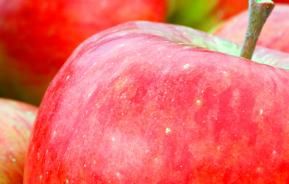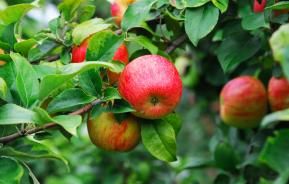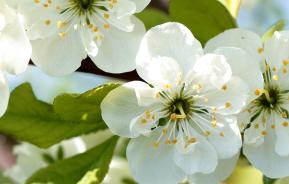Crab apples (Malus) are brilliant garden trees that provide lots of interest. They produce masses of brightly coloured flowers in spring, followed by the crab apple fruit in autumn. Some varieties also produce ornamental foliage throughout summer. Most are small or slow growing, making them perfect for all but the tiniest gardens.
And, of course, there are those varieties of Malus that produce much larger fruit – dessert and culinary apples.
How to grow crab apples
Cultivation
Crab apples prefer an open, sunny site, with plenty of space, so you can fully enjoy and admire the flowering and fruiting display. They prefer a good, well-drained soil enriched with lots of organic matter, which holds plenty of moisture in spring and summer, doesn’t dry out in summer or become waterlogged.
Crab apples will grow in most soils types.
Crab apple varieties
There are lots of great species and varieties, many being small or slow growing making them suitable for all but the tiniest garden. Most have quite an upright growth habit, although there are also weeping varieties.
Flower colours range from white through to deep red. Foliage colour can either be green or purple and many have beautiful autumn leaf colour too.
They light up gardens in autumn and winter, with their large crops of crab apples. These range from large bunches of quite small fruit, all the way up to the large fruit of ‘John Downie’, which is perfect for making crab apple jelly.
The following are all excellent trees, suitable for even small gardens:
- Malus x atrosanguinea Gorgeous: is a, well gorgeous, small tree. Its white flowers, pink in bud, produce orange-red fruit.
- Malus hupehensis: is one of the tallest crab apples, producing a spreading tree up to 12m (40ft) high. The masses of white flowers are pink in bud and are followed by quite small, deep red fruit. The foliage produces red and yellow autumn tints.
- Malus Pink Glow: is a small tree with white flowers, followed by pinkish-red fruit, which are excellent for making jelly.
- Malus x robusta Red Sentinel: as its name suggests, has an upright habit. The masses of white flowers are followed by deep red fruit.
- Malus Royalty: is a colourful, small to medium-sized tree with purplish-red flowers, followed by small, deep purple fruit and deep purple leaves.
- Malus x zumi Golden Hornet: forms a rounded tree. The white flowers are pink in bud and produce large golden-yellow fruit, suitable for making jelly.

Planting crab apples
Plant bare-root trees between November and March, and container-grown ones any time of year, but preferably in autumn, winter or spring. Dig a hole 60x60cm (2x2ft) and 30cm (12in) deep. Add a layer of organic matter – such as compost or well-rotted manure – to the base of the hole and dig in. Place the roots in the planting hole and adjust the planting depth so that the tree is planted at the same depth as it was originally growing and the top of the roots are level with the soil surface.
Mix in more organic matter with the excavated soil and fill in the planting hole. Stake the tree with a rigid tree stake and two tree ties so that it is fully supported against the prevailing winds. Water in well, apply a granular general feed over the soil around the tree and add a 5-7.5cm (2-3in) deep mulch of well-rotted garden compost or bark chippings around the root area. If planting in the lawn, create a turf-free circular bed around the tree with a minimum diameter of 60cm (2ft).
Suggested planting locations and garden types
Plant crab apples in flower borders and beds, focal point, city and courtyard gardens.
How to care for crab apples
Once planted and properly established, crab apples need very little aftercare. They may need watering during prolonged dry periods in summer. Feed with a general granular plant food in spring.
If any pruning is needed, it can be carried out at any time of year, although winter is the best time.
| Flowering season(s) | Spring |
|---|---|
| Foliage season(s) | Spring, Summer, Autumn |
| Sunlight | Full sun |
| Soil type | Chalky, Clay, Loamy, Sandy |
| Soil pH | Neutral |
| Soil moisture | Moist but well-drained |
| Ultimate height | Up to 12m (40ft) |
| Ultimate spread | Up to 5m (16ft) |
| Time to ultimate height | 10-20 years |








